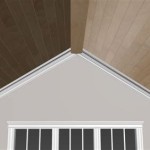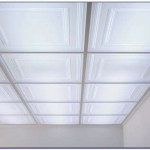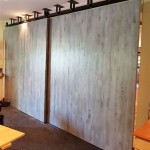Low Ceiling Ideas To Add Style And Comfort Your Home
Low ceilings can present a challenge when designing a home interior. They can make a room feel cramped and diminish the overall sense of space. However, with careful planning and strategic design choices, it is possible to create a stylish and comfortable home, even with limited vertical space. This article explores various low ceiling ideas aimed at maximizing visual height, enhancing natural light, and incorporating décor elements that contribute to a more spacious and inviting atmosphere.
The perception of ceiling height is influenced by several factors, including color palettes, lighting fixtures, furniture scale, and the arrangement of decorative items. By understanding these principles, homeowners can implement effective strategies to visually raise the ceiling and create a more expansive feel. Careful consideration of these elements, coupled with a thoughtful approach to design, can transform a low-ceilinged space into a comfortable and aesthetically pleasing environment.
Strategic Color Choices for Visual Enhancement
Color plays a pivotal role in how we perceive space. In rooms with low ceilings, selecting the right color palette can significantly impact the perceived height. Opting for lighter colors on the ceiling will reflect more light, making the room feel brighter and more open. White is a classic choice for ceilings because its high reflectivity maximizes the effect of natural and artificial light. Off-white shades, such as cream or ivory, can also work well, providing a softer alternative to pure white. These lighter hues create a sense of airiness, drawing the eye upward and making the ceiling appear higher.
The walls should also be considered carefully in relation to the ceiling color. Matching the wall color to the ceiling color can blur the lines between the two surfaces, creating a seamless and continuous visual effect. This monochromatic approach can be particularly effective in small rooms, as it minimizes visual breaks and maximizes the sense of spaciousness. Alternatively, painting the walls in a slightly darker shade than the ceiling can add depth and dimension to the room without overwhelming the low ceiling. When using darker wall colors, it is crucial to maintain a light ceiling to ensure adequate light reflection.
Another technique is to use vertical stripes or patterns on the walls. Vertical lines naturally draw the eye upward, creating the illusion of height. Wallpaper with vertical stripes or painted vertical lines can be a subtle yet effective way to elongate the walls and make the ceiling appear taller. When using vertical patterns, it is important to choose a design that is not too busy or overwhelming, as this can have the opposite effect and make the room feel cluttered.
In contrast, horizontal stripes should be avoided, as they can visually widen the room, making the ceiling feel even lower. Similarly, avoid creating a strong contrast between the ceiling and the walls, particularly with dark colors on the ceiling, as this will accentuate the low height and make the room feel more confined. The goal is to create a sense of continuity and flow, minimizing any visual breaks that draw attention to the ceiling height.
Optimizing Lighting for Increased Brightness
Lighting is a crucial element in any interior design, but it is particularly important in rooms with low ceilings. Effective lighting can brighten the space, reduce shadows, and create the illusion of height. The key is to choose lighting fixtures that direct light upwards, rather than downwards, to wash the ceiling with light and visually lift it. Avoid using pendant lights or chandeliers that hang down too low, as these can draw attention to the ceiling height and make the room feel smaller.
Recessed lighting is an excellent option for low ceilings. These fixtures are installed flush with the ceiling, providing ambient light without taking up any vertical space. Recessed lights can be strategically placed throughout the room to ensure even distribution of light and eliminate dark corners. Dimmable recessed lights offer flexibility, allowing homeowners to adjust the brightness level to suit their needs and create different moods.
Wall-mounted sconces are another effective lighting solution for low ceilings. Sconces direct light upwards, washing the walls with light and creating a sense of height. Choose sconces that are sleek and minimalist in design to avoid adding visual clutter. The placement of sconces is also important. Mounting them higher on the walls will maximize their effectiveness in creating the illusion of height.
Floor lamps that direct light upwards, known as uplights, can also be used to illuminate the ceiling and create a sense of spaciousness. These lamps are particularly effective in corners, where they can brighten up dark areas and make the room feel larger. Choose floor lamps with adjustable heads to direct the light exactly where it is needed. Table lamps can also be used to add layers of light to the room, but should be chosen carefully to ensure they are not too tall and do not obstruct views.
Natural light is a valuable asset in any room, and maximizing its availability is essential in spaces with low ceilings. Keep windows clean and unobstructed to allow as much natural light as possible to enter the room. Use light and airy window treatments, such as sheer curtains or blinds, that allow light to filter through while still providing privacy. Avoid using heavy drapes or curtains that block out natural light and make the room feel darker and smaller.
Furniture Selection and Arrangement for Enhanced Space
The choice and arrangement of furniture can significantly impact the perceived size of a room with low ceilings. Opting for low-profile furniture is a key strategy for maximizing vertical space and creating a sense of openness. Low sofas, chairs, and tables will prevent the room from feeling cramped and allow more of the walls to be visible, which can visually expand the space.
Choose furniture with clean lines and simple designs. Avoid bulky or ornate pieces that can overwhelm the room and make it feel cluttered. Furniture with exposed legs can also help to create a sense of airiness, as it allows light to pass underneath and prevents the furniture from feeling too grounded. Transparent furniture, such as glass coffee tables or acrylic chairs, can also contribute to a more spacious feel, as they allow light to pass through and minimize visual obstruction.
Arranging furniture strategically is also important. Avoid placing tall furniture against walls, as this can accentuate the low ceiling height. Instead, try to create visual interest by varying the heights of furniture and accessories throughout the room. Group furniture together to create conversational areas, leaving open spaces to allow for easy movement and a sense of flow. Avoid overcrowding the room with too much furniture, as this can make the space feel cramped and uncomfortable.
Mirrors are a powerful tool for creating the illusion of space. Placing a large mirror on a wall can reflect light and create the impression of a larger room. Mirrors are particularly effective when placed opposite windows, as they amplify natural light and bring the outdoors in. Consider using mirrors in strategic locations, such as hallways or small alcoves, to visually expand these spaces.
Vertical storage solutions are essential in maximizing space in rooms with low ceilings. Tall bookshelves or cabinets can draw the eye upward and create the illusion of height. Choose storage solutions that are narrow and tall, rather than wide and short, to maximize vertical space. Consider using floating shelves to display decorative items, as these can create a sense of airiness and prevent the room from feeling cluttered.
Finally, decluttering is essential for creating a sense of spaciousness in any room, particularly those with low ceilings. Remove any unnecessary items that clutter the room and make it feel smaller. Store items out of sight in storage containers or cabinets. A clean and organized room will always feel more open and inviting than a cluttered one. By following these simple guidelines, homeowners can transform their low-ceilinged spaces into stylish and comfortable environments that maximize visual height and create a sense of spaciousness.

How To Style A Room With Low Ceilings 6 Tips From Our Team

How To Style A Room With Low Ceilings 6 Tips From Our Team

Embrace Your Low Ceiling With One Of These Clever Design Tricks

Embrace Your Low Ceiling With One Of These Clever Design Tricks

Embrace Your Low Ceiling With One Of These Clever Design Tricks

How To Style A Room With Low Ceilings 6 Tips From Our Team

7 Simple False Ceiling Design Ideas For Your Hall Designcafe

Decorative Ceiling Ideas 2024 Checkatrade

Embrace Your Low Ceiling With One Of These Clever Design Tricks

7 Simple False Ceiling Design Ideas For Your Hall Designcafe
Related Posts








